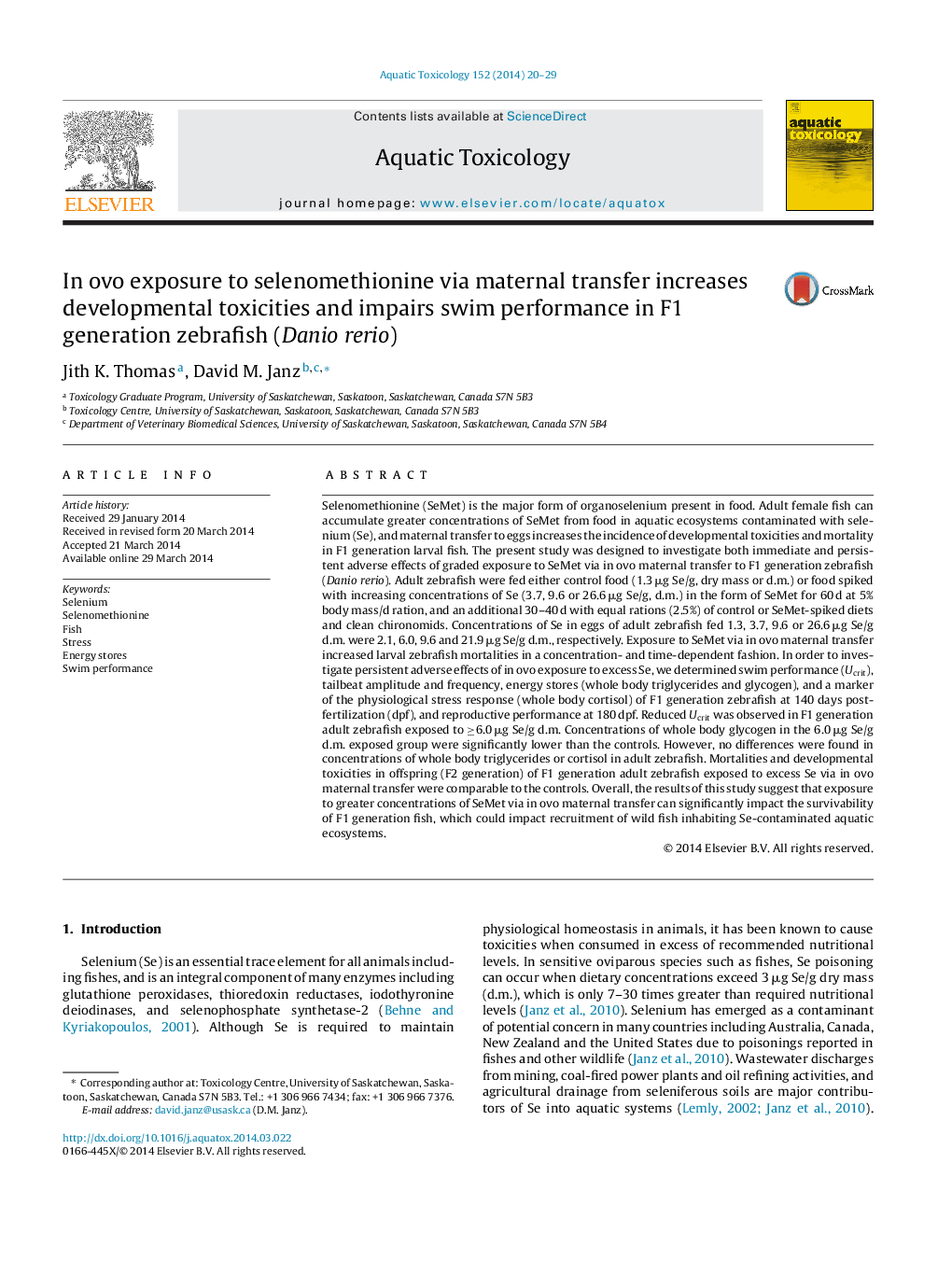| Article ID | Journal | Published Year | Pages | File Type |
|---|---|---|---|---|
| 6382357 | Aquatic Toxicology | 2014 | 10 Pages |
Abstract
Selenomethionine (SeMet) is the major form of organoselenium present in food. Adult female fish can accumulate greater concentrations of SeMet from food in aquatic ecosystems contaminated with selenium (Se), and maternal transfer to eggs increases the incidence of developmental toxicities and mortality in F1 generation larval fish. The present study was designed to investigate both immediate and persistent adverse effects of graded exposure to SeMet via in ovo maternal transfer to F1 generation zebrafish (Danio rerio). Adult zebrafish were fed either control food (1.3 μg Se/g, dry mass or d.m.) or food spiked with increasing concentrations of Se (3.7, 9.6 or 26.6 μg Se/g, d.m.) in the form of SeMet for 60 d at 5% body mass/d ration, and an additional 30-40 d with equal rations (2.5%) of control or SeMet-spiked diets and clean chironomids. Concentrations of Se in eggs of adult zebrafish fed 1.3, 3.7, 9.6 or 26.6 μg Se/g d.m. were 2.1, 6.0, 9.6 and 21.9 μg Se/g d.m., respectively. Exposure to SeMet via in ovo maternal transfer increased larval zebrafish mortalities in a concentration- and time-dependent fashion. In order to investigate persistent adverse effects of in ovo exposure to excess Se, we determined swim performance (Ucrit), tailbeat amplitude and frequency, energy stores (whole body triglycerides and glycogen), and a marker of the physiological stress response (whole body cortisol) of F1 generation zebrafish at 140 days post-fertilization (dpf), and reproductive performance at 180 dpf. Reduced Ucrit was observed in F1 generation adult zebrafish exposed to â¥6.0 μg Se/g d.m. Concentrations of whole body glycogen in the 6.0 μg Se/g d.m. exposed group were significantly lower than the controls. However, no differences were found in concentrations of whole body triglycerides or cortisol in adult zebrafish. Mortalities and developmental toxicities in offspring (F2 generation) of F1 generation adult zebrafish exposed to excess Se via in ovo maternal transfer were comparable to the controls. Overall, the results of this study suggest that exposure to greater concentrations of SeMet via in ovo maternal transfer can significantly impact the survivability of F1 generation fish, which could impact recruitment of wild fish inhabiting Se-contaminated aquatic ecosystems.
Related Topics
Life Sciences
Agricultural and Biological Sciences
Aquatic Science
Authors
Jith K. Thomas, David M. Janz,
